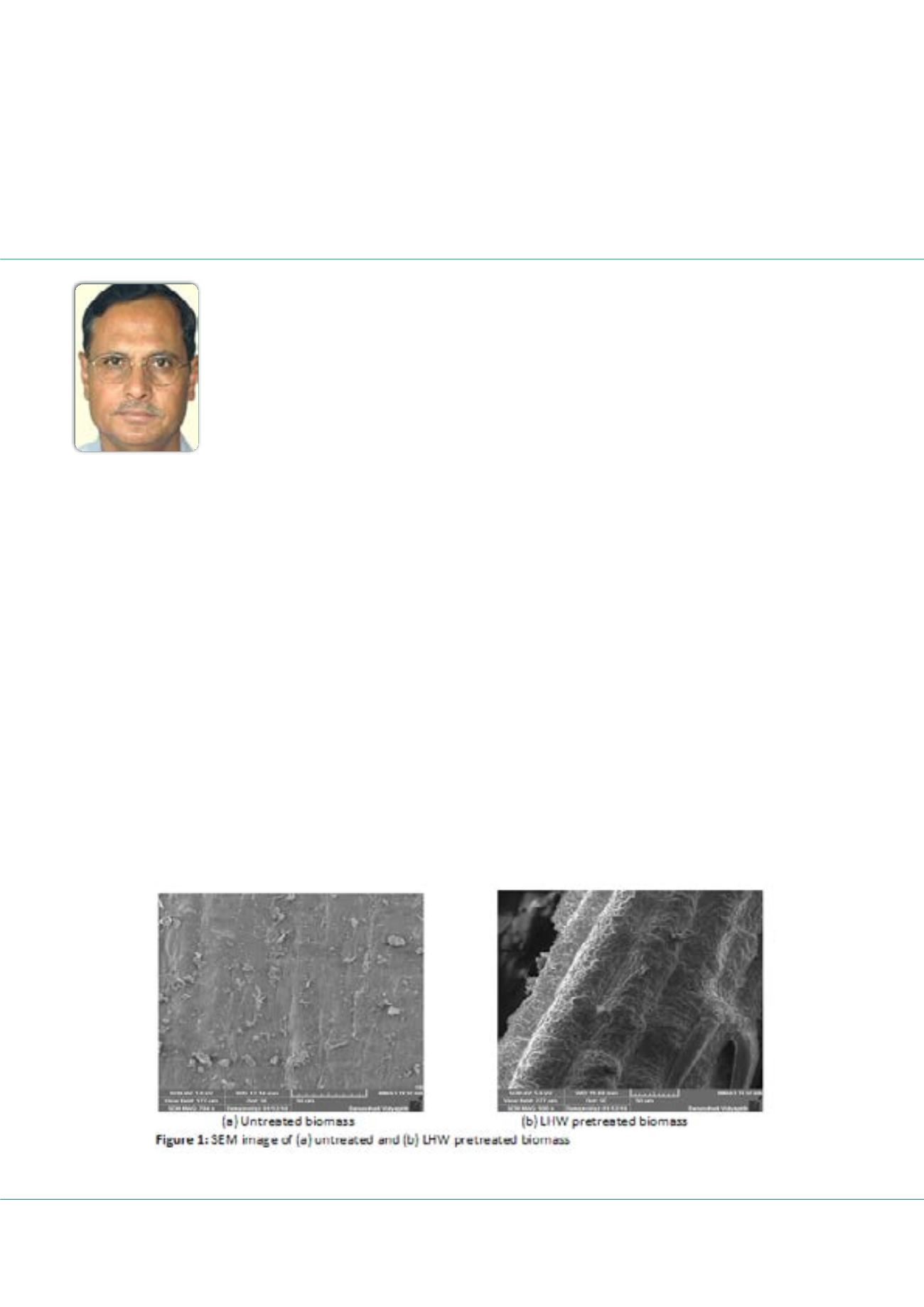

Volume 9
Journal of Bioremediation & Biodegradation
ISSN: 2155-6199
Biofuel Congress 2018 &
Biomass 2018
September 04-06, 2018
Page 40
conference
series
.com
JOINT EVENT
September 04-06, 2018 | Zurich, Switzerland
13
th
Global Summit and Expo on
Biomass and Bioenergy
&
12
th
World Congress on
Biofuels and Bioenergy
Vinay Sharma, J Bioremediat Biodegrad 2018, Volume 9
DOI: 10.4172/2155-6199-C1-013
Development of efficient bioprocesses for improved bioethanol production from a mixture of food
wastes
L
ignocellulosic bioethanol production now-a-days is gaining increasing interest due to global warming, hike in oil price etc.
But there are several technological and other challenges associated with bioethanol production. Technological challenges are
development of efficient pretreatment step which can significantly degrade lignin without altering carbohydrates, efficient hydrolysis
step and development of fermentation step which can utilize both pentose and hexose sugars. The present study has focused on
bioprocess development for bioethanol production from a mixture of food wastes (spinach, cabbage, peels of onion and orange). First
liquid hot water (LHW) pretreatment of food waste was optimized by varying different parameters (temperature, incubation time
and substrate concentration). Maximum reducing sugar yield (525.60 mg/gram dry substrate) was found at substrate concentration
10% (w/v), temperature 160
o
C and incubation time 30 min. After optimization, LHW pretreated biomass was characterized using
Fourier transformed infrared spectroscopy (FTIR), X-ray diffraction (XRD), Scanning electron microscopy (SEM) and biochemical
composition analysis. Further, pretreated biomass was hydrolysed using whole cells of
Fusarium incarnatum
KU377454 (locally
isolated strain) without addition of any enzymes. It showed maximum reducing sugar yield of 580.95 mg/gram dry substrate) within
3 days of incubation at 30
o
C. The produced sugar hydrolysate was further fermented using co-cultures of hexose fermenting strain
(
Sacchromyces cerevisiae
) and pentose fermenting strain (
F. oxysporum
). Maximum ethanol production (3.25%, v/v) was observed
after 48 h of incubation at 35
o
C. The present study, reports development of efficient thermal pretreatment without addition of any
chemicals. Further carbohydrates, part of pretreated biomass were converted into reducing sugars by whole fungal strain without the
use of any costly chemicals. Lastly, fermentation process was optimized using co-culture strategy which yielded maximum ethanol
from both pentose and hexose sugars. This study can be useful for commercial bioethanol production from food waste.
Vinay Sharma
Banasthali University, India
















